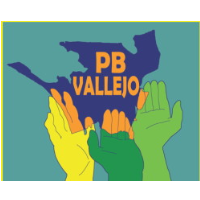Unlike the State, Once-Bankrupt Vallejo Lets Residents Help Write the Budget

Before Democratic state lawmakers and Governor Jerry Brown reached agreement Monday on key state budget items, they fended off GOP legislators, huddled with lobbyists, negotiated with interest groups, studied polls and gathered anecdotal evidence of the popular will.
But they lacked what the once-bankrupt city of Vallejo had for its budget deliberations—a Top 12 list of preferences from the residents.
Everybody loves a list, and Vallejo seems to love theirs. The city set up a pilot program called Participatory Budgeting Vallejo to help decide how to spend a $3.2 billion portion of Measure B, a one-cent sales tax passed in November 2011. The other 70% of Measure B money is earmarked for police, street repair and other projects deemed essential by the city.
After a series of assemblies in November, a list of 33 budget priorities emerged and last month every resident 16 and older was allowed to vote for six of them. Felons, non-U.S. residents and people living in unincorporated areas of Vallejo were also allowed to vote.
3,917 residents in a city of 110,000 cast their ballots and the top vote-getter, Potholes and Street Repair (pdf), dominated with 2,298 votes at a cost of $550,000. The most expensive item on the list, Parks and Recreation Improvement (pdf) ($621,500), finished third in the balloting with 1,323 votes.
The third-most expensive item barely snuck on to the list at Number 12. Residents chose to spend $450,000 on 150 Camera Pilot with Intelligent Archives (pdf), a one-year pilot program to take pictures of license plates all over town and archive them for law enforcement. The program edged out spending $200,000 for the Vallejo Schools Marching Band Programs (pdf), 802-762.
The arts did not fare well. None made the cut. Losers included $92,000 for the Vallejo Blues & Heritage Festival (pdf), $80,000 for Mira Theatre Community Center Space: New Roof (pdf), $80,000 for Mira Theatre Guild Summer Arts Education (pdf), and $50,000 for the Public Art Project to Honor Vallejo’s Music Legends (pdf). Sly of Sly and the Family Stone grew up in Vallejo and R&B legend Johnny Otis was born there.
The list will be submitted to the city council, which will make the final decisions.
Participatory budgeting (pdf), a policy-making process that directly involves citizens, was inspired by municipal experiments in Brazil beginning in the 1980s. Chicago and New York City have tried in on a limited basis.
Vallejo became a pioneer in the process just two years after emerging from bankruptcy and not everybody is on board with the concept. Mayor Osby Davis told the San Francisco Chronicle that with the police force down to 88 officers from a high of 140, “This is not the time to fund whatever we want.”
–Ken Broder
To Learn More:
Vallejo Is Participatory Budgeting Pioneer (by Carolyn Jones, San Francisco Chronicle)
Editorial Notebook: In Vallejo, Residents Get Say on Spending (by Ginger Rutland, Sacramento Bee)
After Bankruptcy, California City Experiments with Letting Voters Make Budget Decisions (by Claudia Cowan, Fox News)
Participatory Budgeting (City of Vallejo)
California Budget Deal Reached by Gov. Jerry Brown, Lawmakers (by Mike Rosenberg and Sharon Noguchi, San Jose Mercury News)
A Guide to Participatory Budgeting (by Brian Wampler) (pdf)
- Top Stories
- Controversies
- Where is the Money Going?
- California and the Nation
- Appointments and Resignations
- Unusual News
- Latest News
- California Forbids U.S. Immigration Agents from Pretending to be Police
- California Lawmakers Urged to Strip “Self-Dealing” Tax Board of Its Duties
- Big Oil’s Grip on California
- Santa Cruz Police See Homeland Security Betrayal in Use of Gang Roundup as Cover for Immigration Raid
- Oil Companies Face Deadline to Stop Polluting California Groundwater





